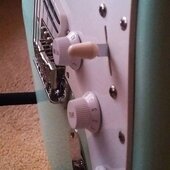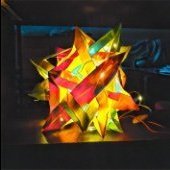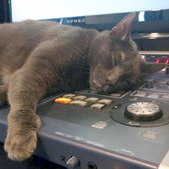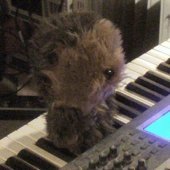-
Posts
7,162 -
Joined
-
Last visited
-
Days Won
12
John Vere last won the day on June 23
John Vere had the most liked content!
Reputation
3,518 ExcellentAbout John Vere
- Birthday 01/10/2018
Recent Profile Visitors
21,079 profile views
-
CWBL won't launch, gets stuck on driver
John Vere replied to OPunWide's topic in Cakewalk by BandLab
The best practices for Cakewalk products has always been installing the oldest version first and go from oldest to the newest. My routine after I re installed Windows 11 is 8.5, X3 then running CCC to install the goodie’s and Splat. No point in installing CbB for me I just installed Free Sonar. I might install Free Next but don’t see much point because it doesn’t have any instruments which is why I kinda like it. Audacity has the best stem separation tool out of all the free software I tried. -
John Vere started following Sonar X1 Studio not Launching , VST2 Plugins causing Sonar 31.07.0.084 to crash , Two accounts maybe the problem and 7 others
-
VST2 Plugins causing Sonar 31.07.0.084 to crash
John Vere replied to MikeyT's topic in Cakewalk Sonar
In my experience vst 64 go to the Program Files vst folder and 32 bit go to the x86 folder. So I never scan that folder. When I run the installers using the CCC it always asks me what version I want to install.   I have those plug ins and they work perfectly fine for me in Sonar. -
CWBL won't launch, gets stuck on driver
John Vere replied to OPunWide's topic in Cakewalk by BandLab
Heads up. A while back I was having Sonar crashes when opening projects. Windbg pointed at Sonar. Exe. Safe mode revealed it was a bunch of Pro Channel modules. Support always tells you to perform a clean install because they don’t have a solution. It never worked for me. And in the end I lost all my personal data from the last 5 years. So personally I’m not a big fan of the clean install. -
Interesting. The OP came back 24 hours after posting but didn’t respond. .
-
Seems simple. Just open each of the accounts and see which one shows you have a membership active. It would seem you successfully changed your password to one of them. I had two accounts for a couple of years and I had no problem logging into each one. But only one had the membership. Don’t let Google auto fill the log in.
-
Which audio modes did you try? Creative labs has a long history of producing an ASIO driver that doesn’t pass the Steinberg specifications.
-
The instructions for the clean install is a starting point but in my case it didn’t resolve my issue.
-
First uninstalling Product Centre will not have any effect whatsoever on Sonar or Cakewalk. It is simply an alternative way to install and update Cakewalk products. It doesn’t seem to be inclusive. You can install Cakewalk, Next and Sonar simply by using the download links on the web pages. Not sure what issue you’re trying to solve by uninstalling Sonar. Re installing with out obliterating all traces which involves editing the register rarely solves software issues. If you simply use the latest version installer you will find in your downloads folder that will be the same as attempting to delete it . It should repair or replace the original.
-
CWBL won't launch, gets stuck on driver
John Vere replied to OPunWide's topic in Cakewalk by BandLab
Best practices. Download and install the latest Drivers from the manufacturer website. Important- Follow the instructions! Make sure the version says that it supports your current OS. Connect the interface when instructed to. Look in Windows settings/ Sound and confirm that the device is the default. Disable all other audio devices especially HDMI. Set Windows to the same sample rate you want to use in your Daw. Now open your Daw and set the driver to ASIO. Cakewalk/ Sonar will have an issue if there’s any Generic audio drivers present on your system. They should be removed completely from the apps list and in the register. -
Same here. Mine seems fine. It seems that people are reporting random graphic glitches in Sonar. Do you have a second computer to test this?
-
Some questions about migrating from CbBL>Sonar
John Vere replied to Gary Shore's topic in Cakewalk Sonar
This! I cringe when I visit the Facebook pages. They will even recommend asio4all! -
When you say clean install did you reformat the drive? That’s the ultimate clean install.
-
Yep. X3 works great. In my opinion X1 was the most bug infested version ever. I stayed away from it until X3 came out. Old dogs can learn new tricks. Give your self a few days and you’ll soon forget X1 even existed. As said not much in the general interface has really changed that much. If you choose to waist a lot of time trying to get X1 working that time is probably best spent just learning how New Sonar works.







.thumb.jpg.eaad641f73d276ceb5533b13026779ae.jpg)








